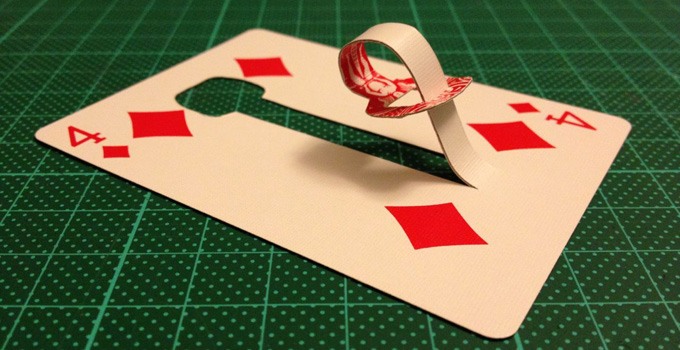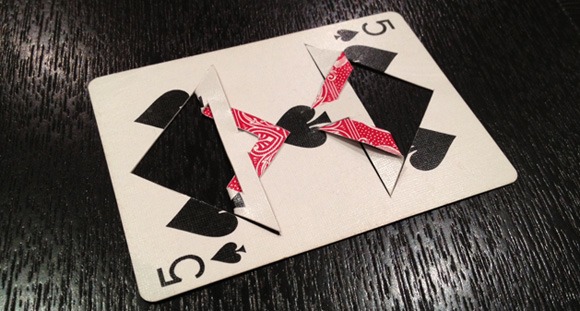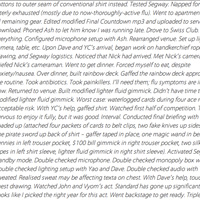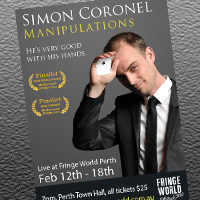Quasi-Impossible Card Sculptures
Several things worth mentioning about the above photo:
-
It’s an unmodified photo straight from the camera. No photoshopping or other image editing. The green background is a cutting mat, not anything computer-generated.
-
The object you’re looking at was made from a single playing card, cut and folded. No adhesives or re-attaching. Just a playing card, a cutting mat, a craft knife, and some moderately complex folding, manipulation, and mild swearing.
-
It’s exactly as it looks in the photo. You could examine it indefinitely and find no hidden slits or anything else other than what you see above.
I made that object and took that photo shortly before the EG conference back in March. It took most of an evening to create, but more importantly, it took three years of research and development to get to a point where I could actually make it happen.
The card itself is based heavily on the work of Ian Rowland’s, who was in turn inspired by Angus Lavery. I first read about Ian’s quasi-impossible playing cards sculptures several years back in a feature article on him in Genii Magazine. I was immediately fascinated, and started hunting for more information about him and these things he makes.
Essentially what Ian was doing was cutting and folding playing cards into aesthetically pleasing and apparently impossible configurations. For example, the photo below is of his "Equilateral Thinking" design, one of the first I saw. It may take a second to realise it, but the card is a folded in a way that should be impossible to achieve without cutting and re-joining it.
I was immediately captivated. One of the drawbacks of doing things that seem impossible as your job is that you quickly lose the ability to experience wonder at them yourself. Ian’s cards, however, took that feeling of wonder and punched me repeatedly in the face with it. For a good two years, their existence utterly baffled me; objects that shouldn’t be able to exist, but somehow did.
Over those two years I made many, many attempts to recreate them myself. I came up with plenty of ways that didn’t work, but learned a huge amount in the process. Still baffled though.
Then one day, a tiny conceptual nudge from my friend YC made all those methods that didn’t work suddenly coalesce into one that did. I made my first quasi-impossible playing card. It was rough, but it worked, and I started creating my own basic variations on the theme.
It’s worth emphasising the scarcity of things like this. There are easily a few million magicians and illusionists around the world, but only a tiny, tiny handful of people who create permanent quasi-impossible objects like these.
It blew my mind to be counted among them, even as a relative beginner.
There was one problem with Ian-style kirigami cards though. Due to their topological complexity, many people I showed them to didn’t actually register that the designs looked impossible. Turns out it was harder to communicate their impossibility than I thought.
I wanted to share my experience of wonder at the cards with as many people as possible. Hence I started trying to boil the design down to the simplest possible elements; attempting to make them more immediately and obviously impossible - even to people without a strong grasp of topology.
To cut a long, LONG story short, after many design attempts, I ended up with the one you saw back at the start of this article. The key difference I made was bringing the loop up into three-dimensional space above the card, as opposed to the “folded flat” approach of most of Ian’s work. That, and simplifying it much as possible to show off the central quasi-impossible design feature. My first attempts were much bigger and chunkier – it took a long time to evolve the technique to get a smaller and more elegant loop. They are VERY hard to make well, and I am extremely proud of them.
For those interested in Ian's incredible work that inspired my own approach, he has a gallery up on Facebook featuring many of his designs, as well as some of the amazingly detailed processes behind them. There is also a shot of yours truly up there, which makes me very happy given the history behind it all.





I am EXTREMELY UPSET that I can’t find ANY directions for making any of these. I’d love to make some and perhaps invent some designs of my own, and I know magicians love to suspend that feeling of wonder for as long as possible, but PLEASE. can SOMEONE point me to some way of making these.